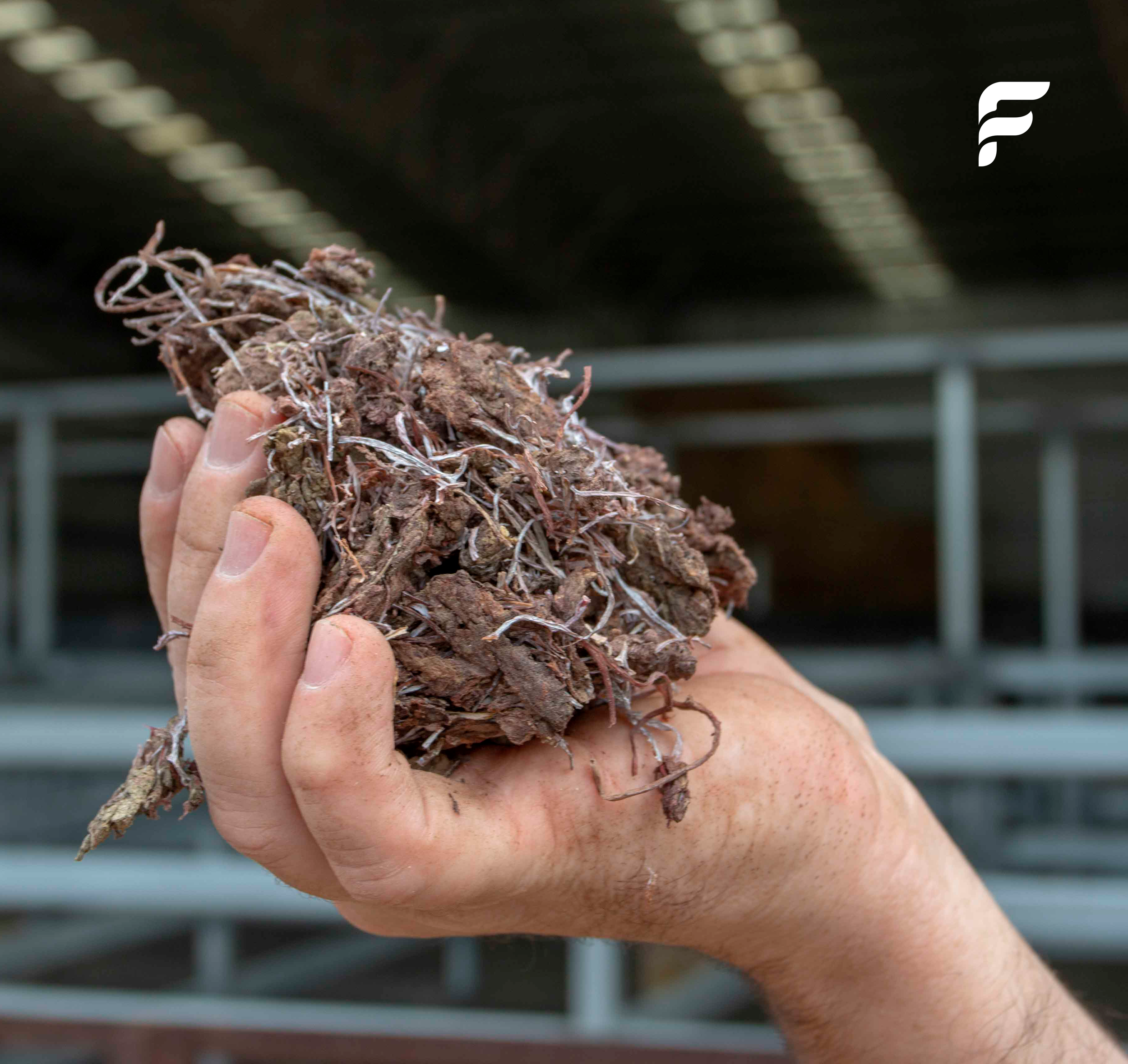Scientists closing in on global methane solution
Image: Freeze-dried Asparagopsis
We may be on the “highway to climate hell” in the words of UN Chief Antonio Guterres at COP27, but scientists in Australia are working with a sense of urgency on a powerful greenhouse gas reduction tool. Asparagopsis seaweed, native to Australia, has been shown to be the most efficient natural supplement available – capable of reducing livestock methane emissions by more than 80 per cent.
“We’ve been working on this solution for eight years,” FutureFeed Chief Scientist Dr. Rob Kinley said.
“The science is already there in terms of proving Asparagopsis as a livestock feed ingredient reduces enteric methane by 80 per cent or more in ruminant livestock in red meat and dairy production.”
Methane reduction is a feasible and effective tool to combat the agriculture sector’s contribution to global warming. While there is more carbon dioxide in the atmosphere, and it lasts longer, methane is more than 80 times greater in its 20-year global warming potential. This means there is an opportunity to impact agriculture’s contribution to global warming in the near term.
Science update
“We have been working hard from the perspective of food product quality and animal welfare to determine the optimal range of inclusion of Asparagopsis to include in livestock feed. It’s been shown that very small amounts are highly effective to produce large methane reductions. Most importantly, the science has confirmed food product safety and animal safety,” Dr Kinley said.
“There are no concerns of residues of the active ingredient, bromoform, in the edible products that come from Asparagopsis-fed livestock.
“There has been Meat Standards Australia (MSA) testing conducted as part of our trials which consistently shows no change to criteria including the meat’s taste, tenderness, and juiciness. So this is a product consumers will be able to enjoy as much as any other.”
FutureFeed’s Role
FutureFeed was established by CSIRO to commercialise research that showed the methane-busting power of Asparagopsis. The original strategy and science was a collaboration between CSIRO and James Cook University scientists, backed by the Australian government and Meat and Livestock Australia. Dr Kinley (then with the CSIRO) was the driver in the animal trials and subsequent development of FutureFeed.
Since ‘spinning out’ from CSIRO in mid-2020, FutureFeed has completed multiple trials and has more underway that will be peer reviewed, giving livestock producers and consumers confidence in Asparagopsis as a feed ingredient and subsequently the food products. FutureFeed has also established a certified trademark - ‘Farmed to Lower Methane’ - which will appear on meat and dairy products on shelves in the future.
Regulatory update
“The agricultural and retail sectors are really eager for this product to be available,” FutureFeed Chief Operations Officer Joanne Barber said.
First comes the science, then comes regulatory approval, and then commercial sales.
“Peer-reviewed science and ‘product dossiers’ are required in many countries in order for a product to receive regulatory approval for commercial sale,” Ms Barber said.
A freeze-dried Asparagopsis product has been approved and made available to early adopters in the Australian livestock industry, and in early 2023 we should see approval of an oil-based product.
“We have several studies soon to be completed in beef and dairy which will be made public next year and inform the way Asparagopsis is used by livestock producers,” Ms Barber said.
There are currently seven Asparagopsis producers licensed by FutureFeed (in Australia, New Zealand, Europe, USA and Canada), and there will be more to come.
Pricing
Asparagopsis is a clear frontrunner in terms of methane reduction capability, however comparative pricing with other supplements is currently a hot topic. The supply chain, namely Asparagopsis producers, will be the ones to determine the price, and it is anticipated that costs will come down as production is scaled in coming years.
There are two other factors which will play into the commercial decision for livestock producers. One is the potential for beneficial feed conversion efficiencies. Early studies indicated that feed energy otherwise lost as methane could be partially redirected to benefit animal production performance. FutureFeed is currently conducting a large-scale trial to quantify these improvements in feedlot beef production.
The second factor will be the benefit of measuring carbon emissions. While Australian livestock producers have access to a voluntary carbon standards scheme called ‘Verra’, there is some reluctance to register as there is the risk of not being able to transition to the Government’s ACCUs program (Australian Carbon Credit Units) in the future. And for now the methodology to reach ACCUs is still being developed for enteric methane reductions. Watch this space though, as there will be a lot to report in due course.
Looking to the future
“Agricultural emissions are one of the biggest challenges the world is facing. Humanity will soon benefit from the years of dedication and hard work of scientists like Dr Kinley and other industry participants. This methane solution is nothing short of extraordinary,” FutureFeed Board Chair Cassandra Kelly said.
Media enquiries:

